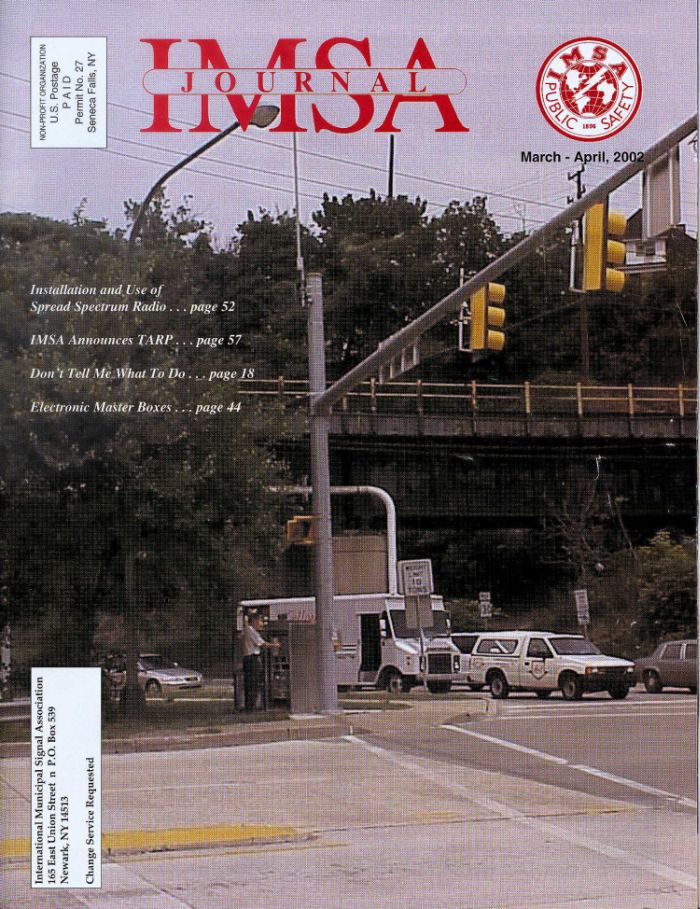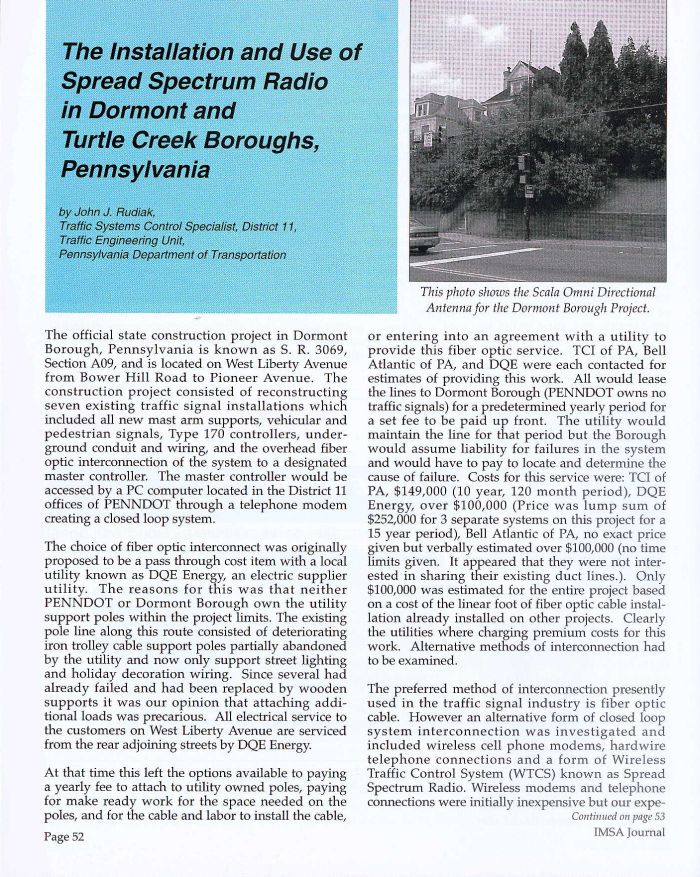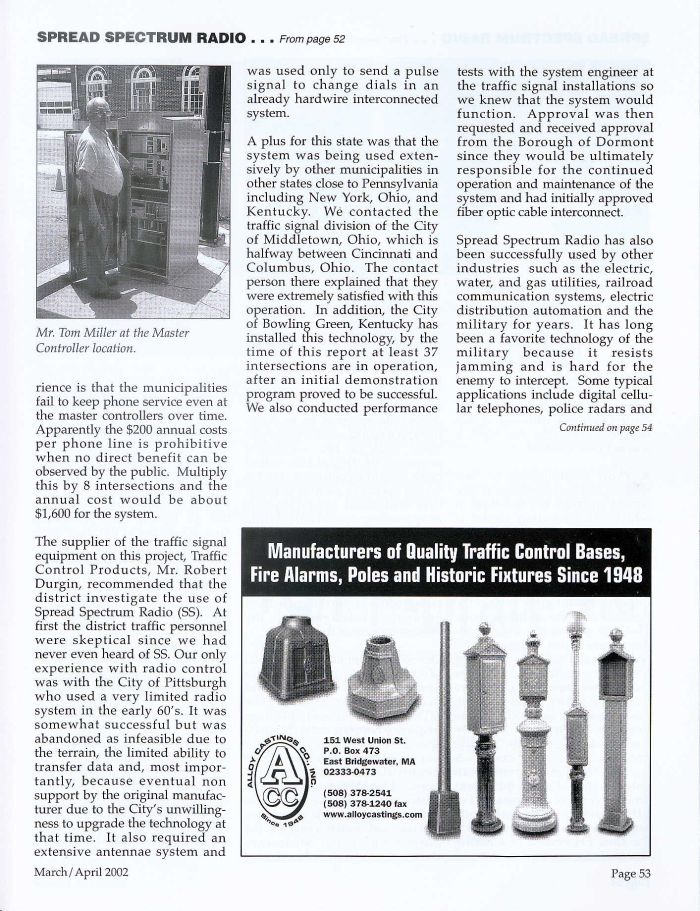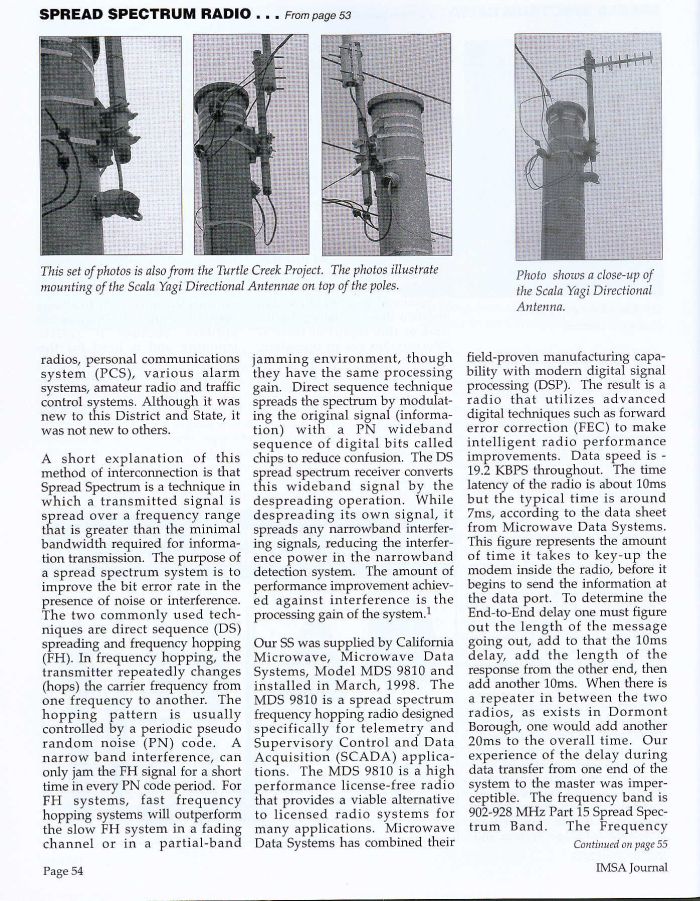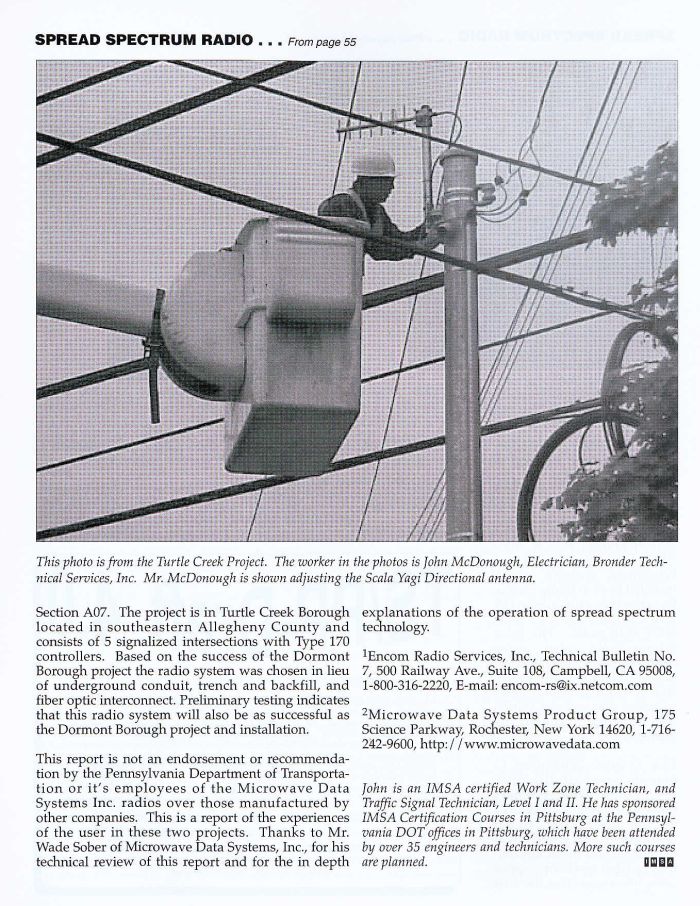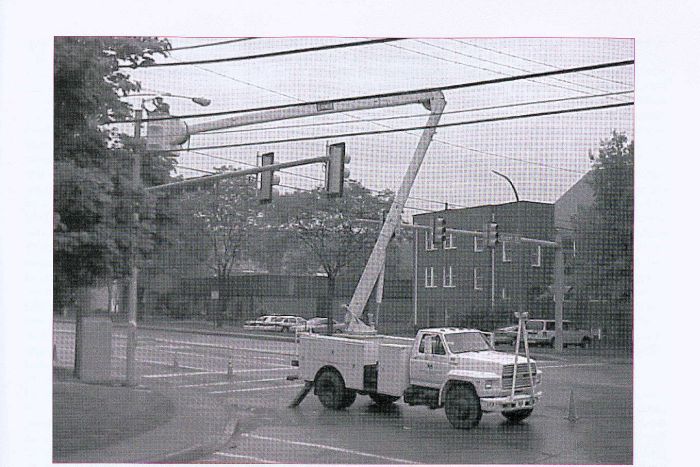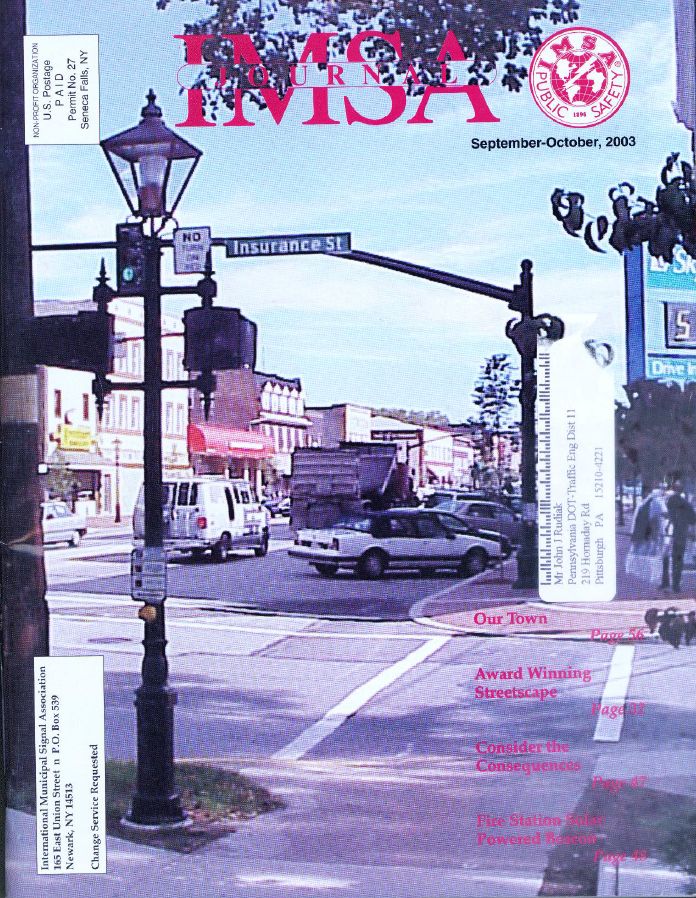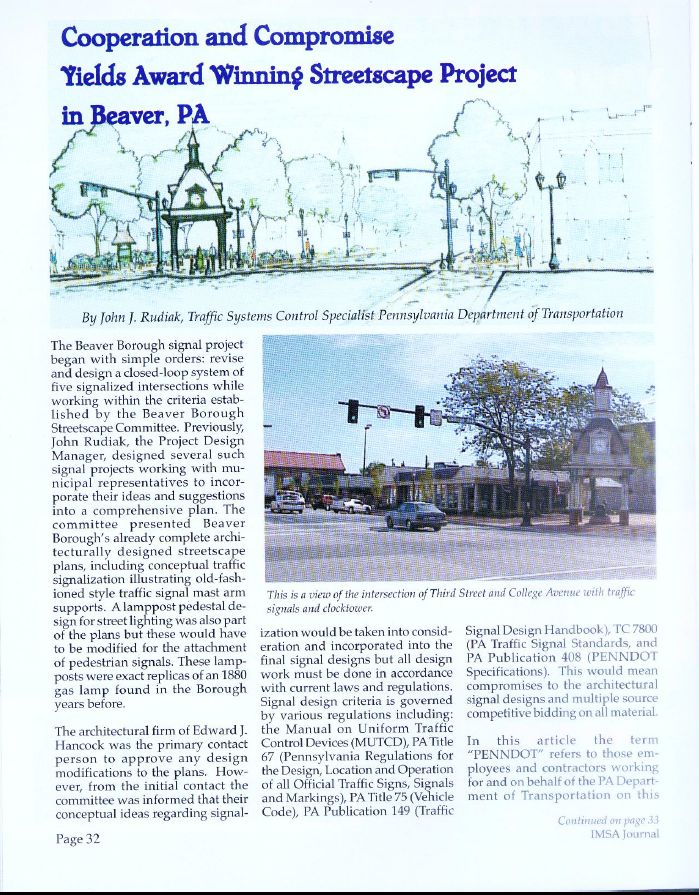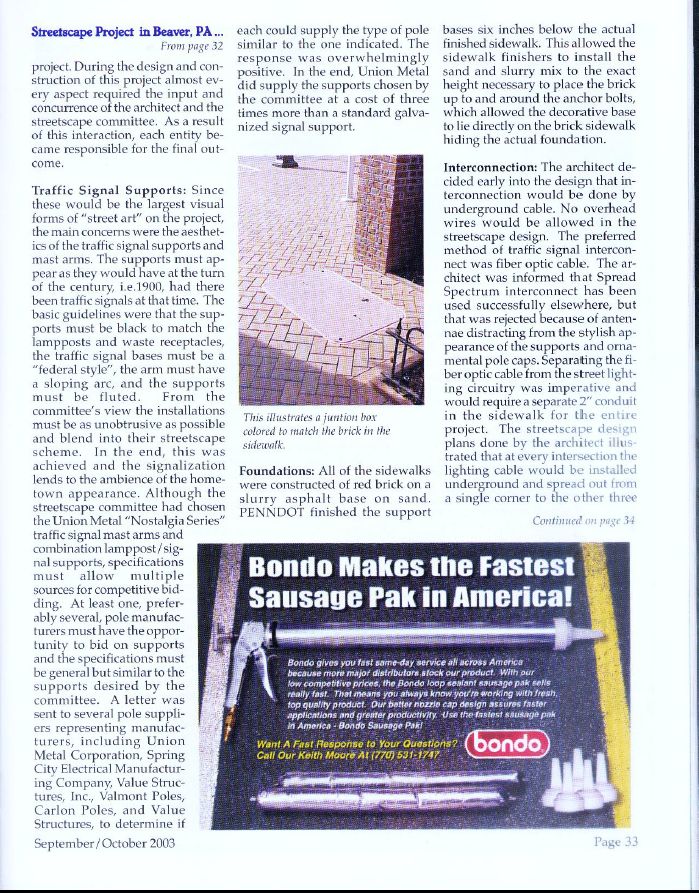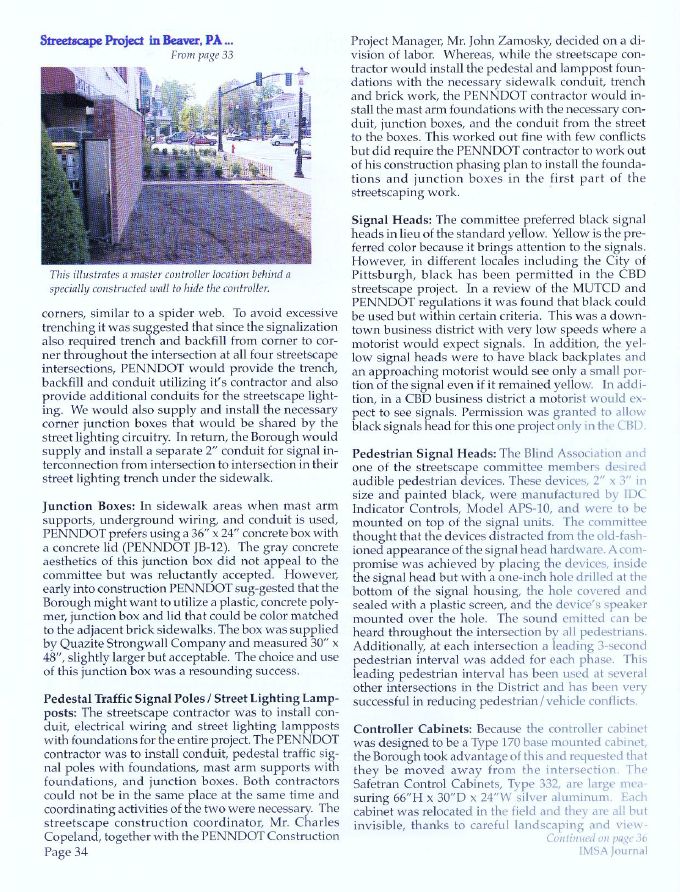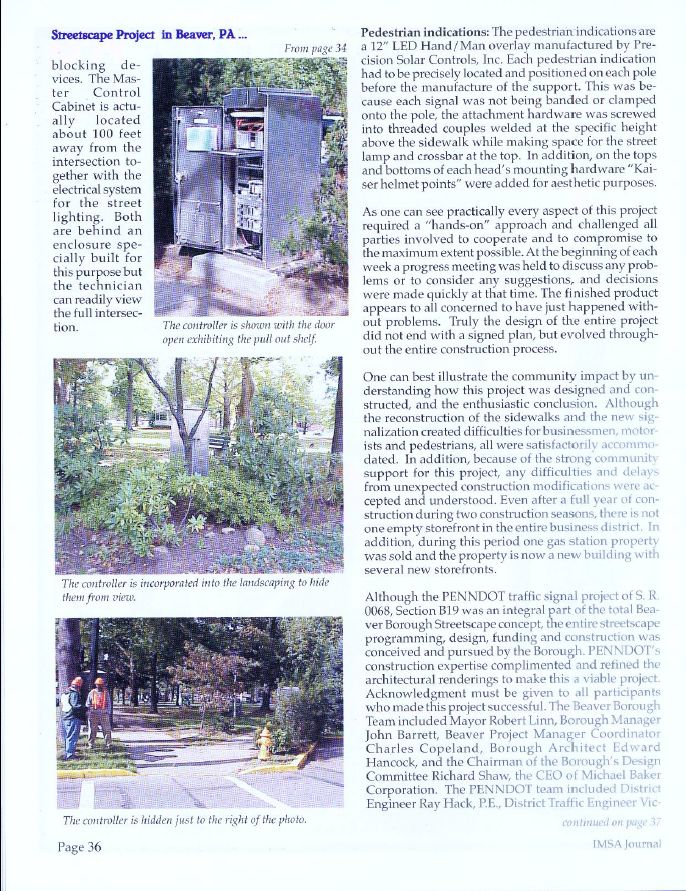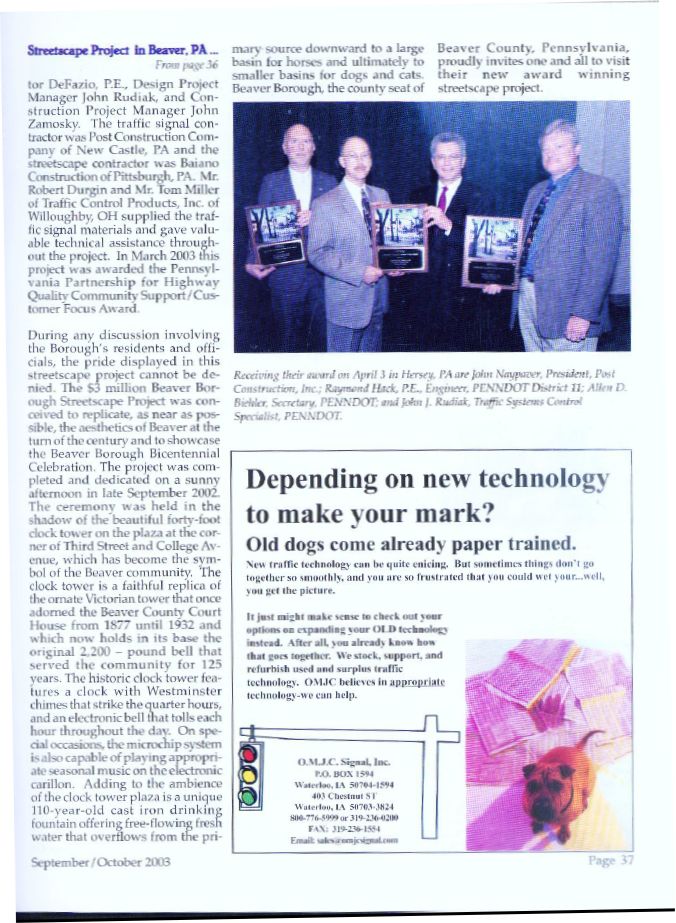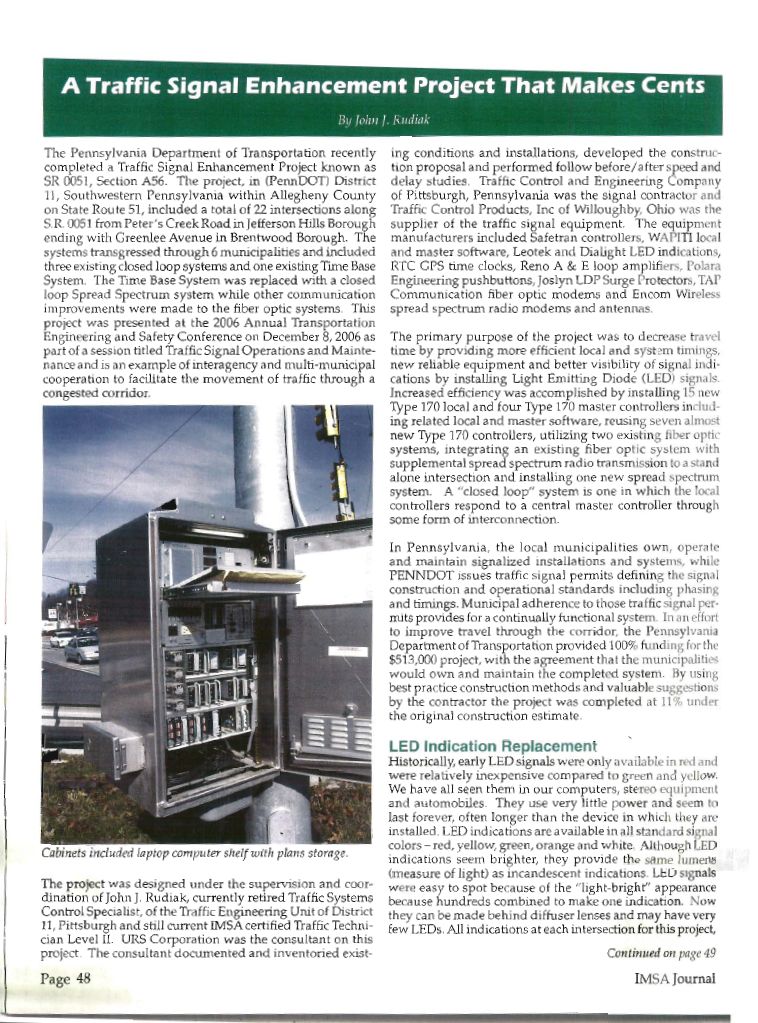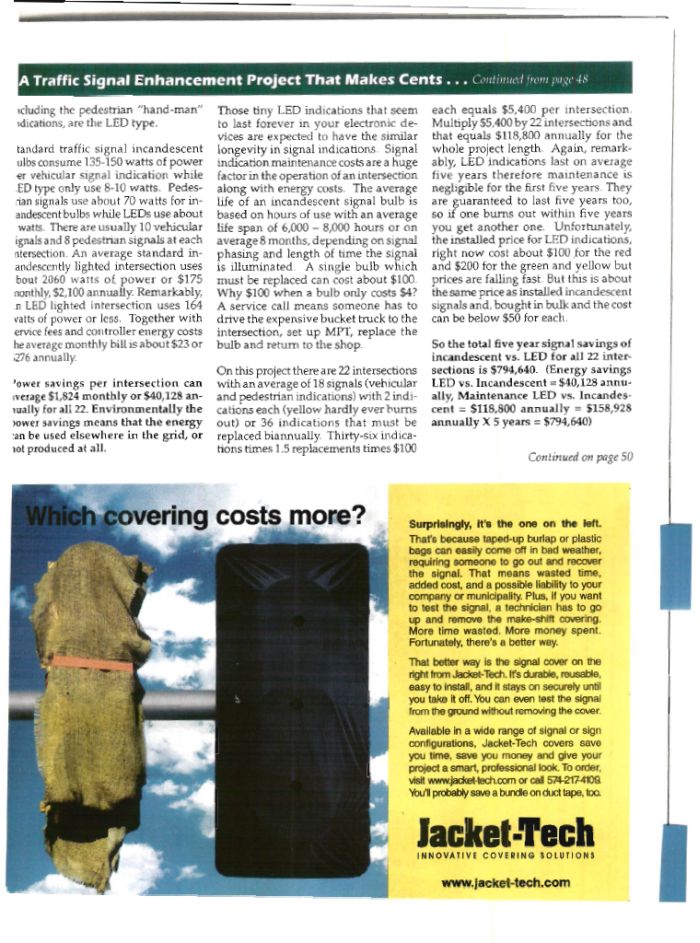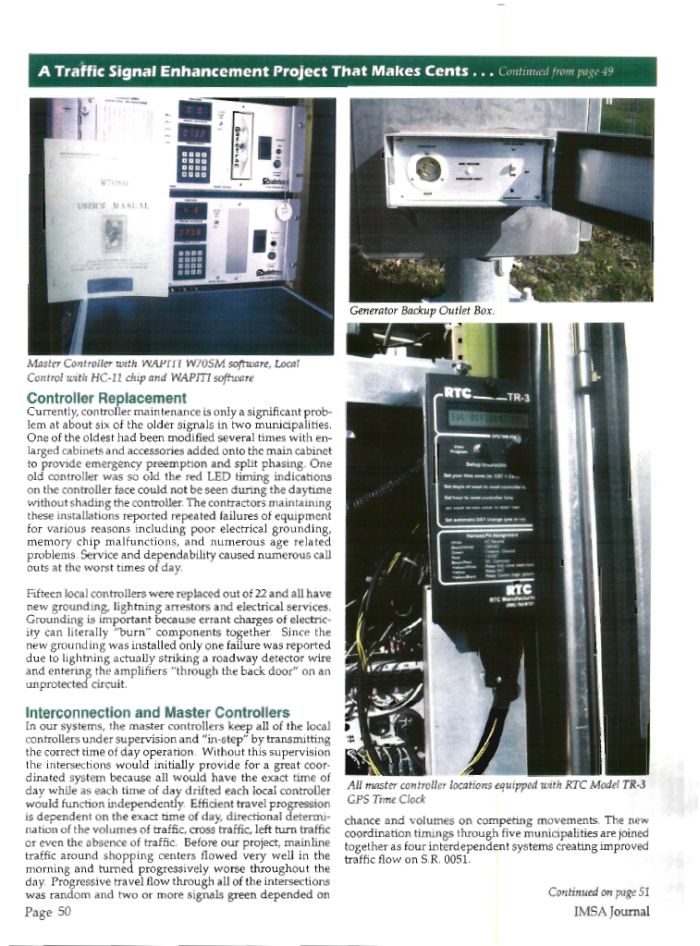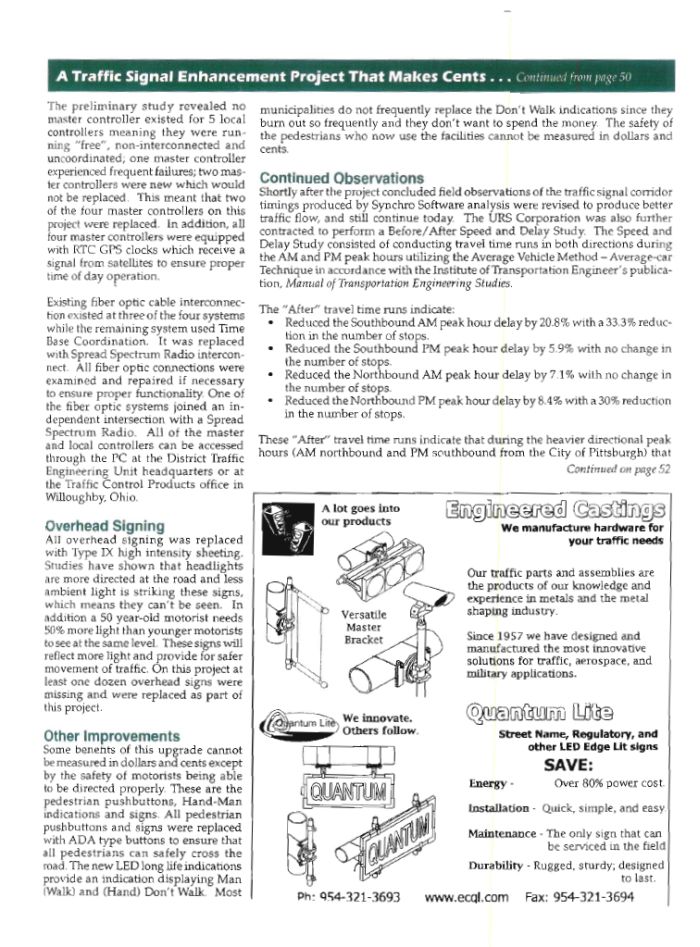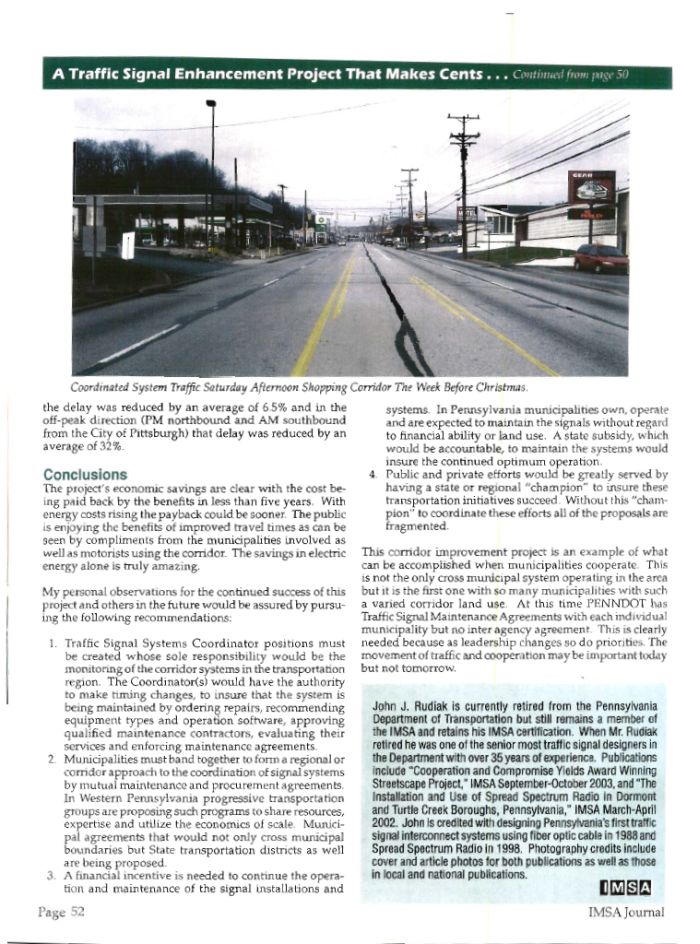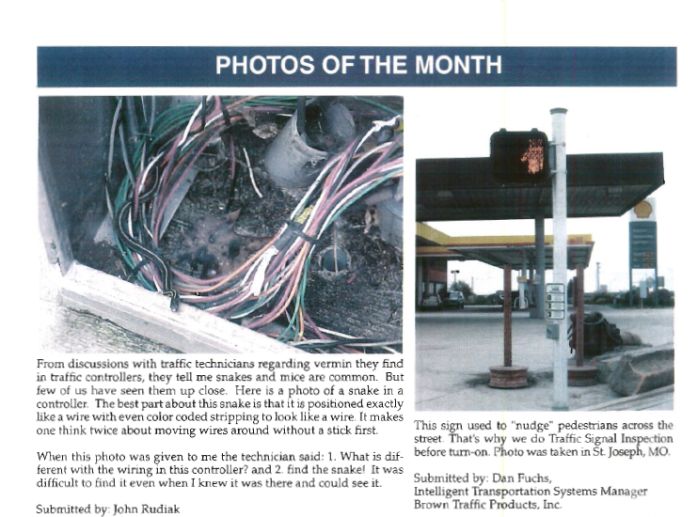Rudiak, John J.
Contents
- 1 Biography
- 2 His Linkedin profile is here
- 3 The following are his publications
- 4 John J. Rudiak has been published in the Pittsburgh Post-Gazette
- 5 Next Page: Nearly everything you don't know about traffic signals
- 6 Read Here
- 7 The Next Page: Shining a light on traffic signals
- 8 Want to save gasoline? Of course you do. Pennsylvania deserves a better way to coordinate traffic signals -- and keep the traffic flowing
- 9 Read Here
- 10 IMSA Journal 2002 The Use of Spread Spectrum Radio Turtle Creek and Dormont Pennsylvania
- 11 IMSA Journal 2003 Cooperation and Compromise Yields Results in Beaver PA
- 12 IMSA Journal 2007 Route 51 Signal Enhancement Project
Biography
Born and raised in the Southside of Pittsburgh, he moved to Carrick in 1976. John married Helena Kusiolek in Przyjma, Poland on August 16, 1977 and is still married. After being employed by the Commonwealth of Pennsylvania for 35 years he retired as a Traffic Systems Control Specialist in District 11 PennDOT. John became a part time technical consultant for Traffic Control Technology of Cleveland for 2 years. He has been involved in the Carrick Community Council and became President in 2012. He is also on the board of the Overbrook Community Council after serving for a few years as Secretary. John is one of the founders of the Carrick Overbrook Historical Society and manages the Facebook page, this site, and the list serve. He is also an adviser position on the Economic Development South board. John is also the President of the American Federation of State County and Municipal Employees, Retired Public Employees of Pennsylvania, Subchapter 8401 (Western Pennsylvania).
John and Helena's daughter is Natalia Rudiak.
His Linkedin profile is here
The following are his publications
John J. Rudiak has been published in the Pittsburgh Post-Gazette
Next Page: Nearly everything you don't know about traffic signals
Sunday, August 05, 2007 By John J. Rudiak
Stacy Innerst, Post-Gazette
The American Traffic Signal Co. claims the first electric traffic signal installation. It is widely accepted as being installed in 1914 in Cleveland at 105th Street and Euclid Avenue. But most historians give credit for inventing the first traffic signal to Garrett Morgan (at right), an African-American inventor and businessman from Cleveland and the son of former slaves, in 1923. Other cities also claim to be first, including Detroit and Salt Lake City.
All modern controllers have a signal monitor to make sure that opposing (or "conflicting," as traffic engineers say) signals are not green when they are not supposed to be. We all rely on knowing that opposing traffic will not be given a green light when we have a green light. This signal monitor will detect a failure within a millisecond and put the signal into an emergency flashing mode, whether it be yellow-red, or all red. Not the best operation -- but safer than two opposing green indications.
All traffic signals sold today must be low-energy and low-maintenance light emitting diode or LED indications. Old incandescent signals used bulbs consuming 150 watts per indication, while the new LED type uses only about 10 watts. A typical intersection now uses the same energy that was used to light a single bulb and the indications seem brighter too and last eight times longer. LED signals are now used all over the world.
Early traffic detectors were the "treadle or pressure type" where vehicles rode over a steel plate depressing a contact and sending the signal to the controller. You can sometimes see remnants of these treadle detector plates in the street because they are difficult to remove.
Detectors of various types and methods can be seen throughout the region and world and range from wires in the roadway that set up an electric field, radar, microwave and relatively recently, video cameras that rely on pixel change to detect vehicles. For pedestrians, a simple press on a pushbutton still does the job. These modern detectors detect single vehicles. They can also count the vehicles over a period of time -- and then transmit this data to a microcomputer, which analyzes it and determine the best cycle length, approach-timing splits and offsets for the system.
Telling the controllers when to turn green or red in relation to the adjacent signals is referred to as the "offset." Turning the next signal green a period of time after another can progress a platoon of vehicles through a corridor at a set speed. This is called a progressive and coordinated movement of traffic. The time-space continuum in which the platoon travels is called the "greenband." A well-coordinated signal system of a central business district or a traffic route can be a marvelous thing to observe and drive.
Early methods of traffic signal interconnection consisted of copper wires sending electric pulses between signals from a "master" controller. These pulses kept each controller timing drum at the right place relative to the others. Modern interconnection uses fiber-optic cable between intersections and spread spectrum radio which uses frequency-hopping to eliminate radio interference and is becoming more dependable and versatile. The first installation of fiber-optic cable in 1988 and spread spectrum radio in 1998 in Pennsylvania were in Forest Hills and Dormont, respectively. They are still operating today.
How does a traffic signal work? How does it switch from green to yellow to red, and back? Very early controllers were simple. They had a timer that works light switches electrically through a motor-driven camshaft. These early controllers began to be installed around 1938 and are still functioning today in many area towns. (The photo at right is an old but working controller in Ambridge.) They can be easily identified by listening for a "kachunk" sound for each indication change as the camshaft turns. Although these early controllers could be "traffic responsive" or "actuated" by vehicles, most were not. They are called "fixed time." These signal controllers could also be "synchronized" by having several intersections in a row turn green at the same time.
On Nov. 3, 1924, Pittsburgh became the first city to employ a full-time professional engineer, Burton W. Marsh, under the title "traffic engineer." Mr. Marsh later served from January 1969 to July 1970 as executive secretary of the Institute of Traffic Engineers. As it happens, the ITE is holding its 2007 annual convention in Pittsburgh -- starting today and running through Wednesday.
First published at PG NOW on August 5, 2007 at 12:08 am
Read Here
The Next Page: Shining a light on traffic signals
Want to save gasoline? Of course you do. Pennsylvania deserves a better way to coordinate traffic signals -- and keep the traffic flowing
Sunday, August 05, 2007
By John J. Rudiak
It's no secret that Pennsylvania is a maddening patchwork of tiny municipalities that breed inefficiency. But here's something you probably did not know: In Pennsylvania, traffic signals are owned and operated by the municipality in which they are located. Most citizens would assume, if they have thought about it at all, that PennDOT owns the signals.
For most municipalities, signal maintenance is a low priority. It usually consists of assuring that the lights turn green, yellow and red. Efficiency as part of a complex and interdependent traffic system is not a consideration. The repair of detectors -- the devices that activate a green light when a vehicle approaches -- is one of the key components to improve efficiency. But for many towns, it is an unnecessary expense.
With fuel over $3 per gallon, these are expensive times for motorists. Every minute delayed at inefficient or malfunctioning traffic signals means money wasted. For a driver in Pennsylvania, it seems like getting two or more green lights in a row is a major achievement. Everyone is becoming aware of our antiquated system of traffic signal management -- and the learning process is through the wallet.
In our land of fragmented governmental entities, development is often willy-nilly, approved by a municipality with little regard for the larger fabric. Traffic congestion is one of the first ill effects. Irate motorists complain to PennDOT, not to the towns that caused the problem. Developers must be held accountable for the traffic they generate and be responsible for the traffic signals that benefit their developments.
PENNDOT'S DISTRICT 11 COMPRISES Allegheny, Beaver and Lawrence counties. The district has about 1,700 traffic signals, 650 in the city of Pittsburgh alone. It's difficult to believe but there are dozens of signals installed as early as 1938 -- and are operating as built over 65 years later. These signals have never been reanalyzed or updated.
The Southwestern Pennsylvania Commission is recognizing that signal maintenance and modernization must be a priority. Only five or six municipalities were recognized as having a long-term transportation plan; most do not.
In the 1980s there were several PennDOT programs reconstructing dozens of signalized corridors. The traffic signals on routes 8, 30, 51, 88, and 65 were reconstructed and promptly turned over to the respective communities. Sometimes they were maintained, but usually not. In addition, the corridors have never been reanalyzed -- meaning the original timings have never changed for over 15 years.
If one traffic signal costs, on average, $100,000, millions of dollars have been spent to rebuild these signals. The most important item joining all of these municipalities, rich or poor, is the capability to maintain them.
Traffic signal coordination through dozens of adjoining municipalities is a task for a central administrator. PennDOT has tried to assume this role in District 11 and other parts of the state. But one cannot coordinate signals along a corridor if one or more of the municipalities involved do no signal maintenance. Traffic flow is like water in a pipe. If one section fails and is not repaired, water will not flow regardless of the condition of the adjoining pipes.
This is the same situation on our major arterials. When vehicles are restricted through a corridor, the system fails -- resulting in bottlenecks and irate motorists. The lack of a central supervisor and enforcement of the systems' maintenance and timing changes leads to even more congestion and gridlock. Are the municipalities really to blame? Their high priorities are fire and police, water, sewers and very basic municipal services. When these suffer, local taxpayers complain. Can the efficiency of signals be a major concern?
SO, HOW CAN WE IMPROVE the traffic signals and systems of Pennsylvania?
The state should create a special section in each Engineering District Traffic Unit to evaluate and implement new timings periodically on all corridors. If this is done, the state must also have a method of forcing towns to maintain and update their traffic signals.
Yet demanding that towns maintain signals without adequate funding will force the state into limited signal ownership. The state does not want to own the signals -- but is inevitable.
We must begin to investigate how other states are operating and how signal responsibility is assigned. There is no need to invent a new system when others have already developed policies.
Where will the dedicated funding come from? Whether funding is allocated from existing fuel taxes or new taxes is a decision of the Legislature. But when fuel costs increase daily, will the public notice, or accept, a tax increase? I believe they will only if there is a noticeable improvement in travel times and in the efficiency of all traffic signals.
Unnecessary signals, stop signs, unrealistic speed limits and other traffic restrictions must be evaluated and removed in accordance with law. The state should not be compelled to operate and maintain unnecessary traffic controls.
The present policies regarding traffic signal management in Pennsylvania cannot continue. Motorists must not be satisfied with getting just two green lights in a row. It's time to demand more efficient signals and systems.
First published at PG NOW on August 5, 2007 at 12:07 am
John J. Rudiak recently retired after 35 years at PennDOT, where he was a traffic systems control specialist for District 11. He lives in Carrick (jrudiak@yahoo.com).
Read Here
IMSA Journal 2002 The Use of Spread Spectrum Radio Turtle Creek and Dormont Pennsylvania
IMSA Journal 2003 Cooperation and Compromise Yields Results in Beaver PA
IMSA Journal 2007 Route 51 Signal Enhancement Project
IMSA Journal

